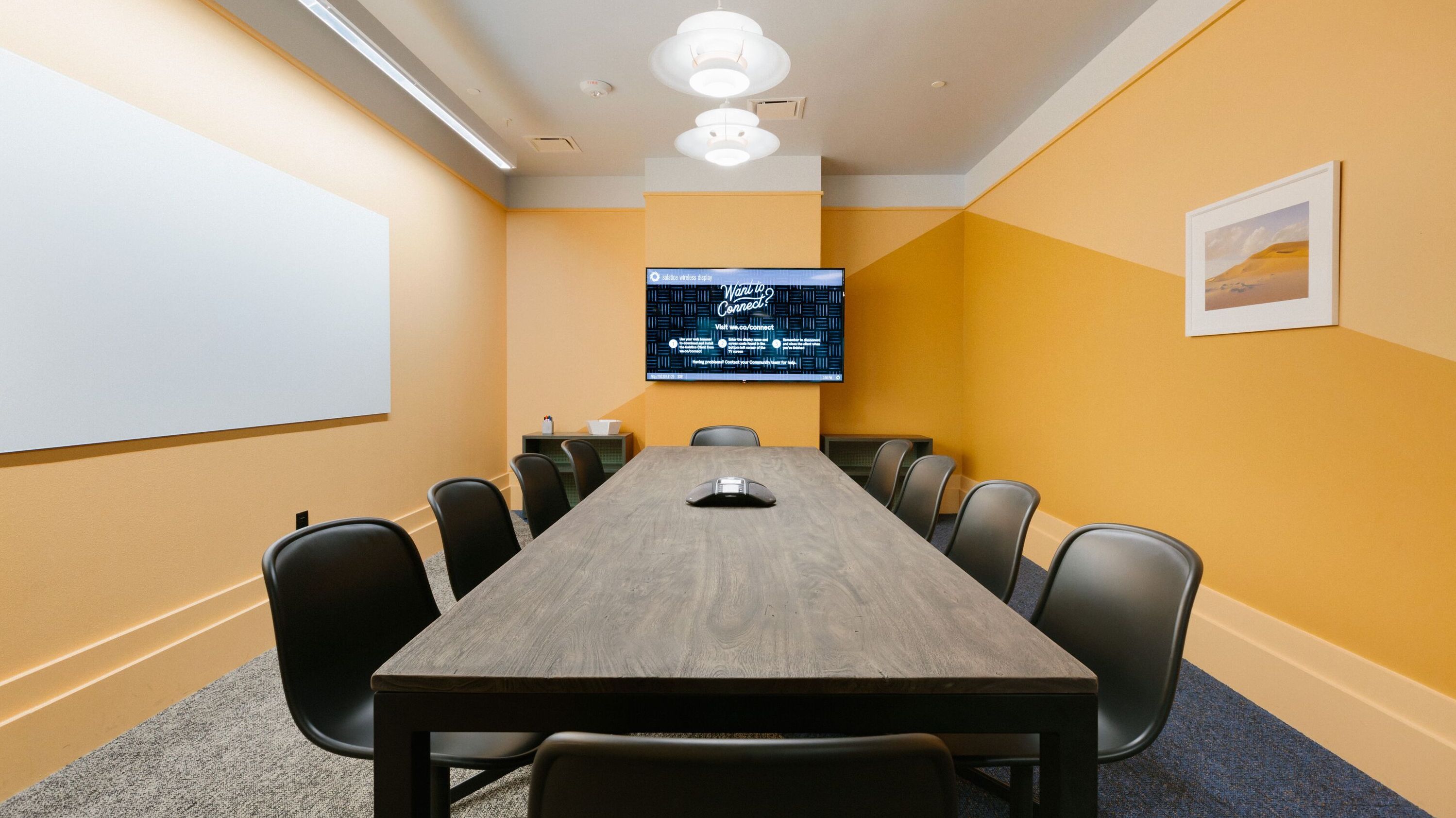As organizations welcome workers back into offices, many are doing so on a hybrid basis: employees are being offered the opportunity to work from home certain days. Other days, they’ll be in the office, collaborating with colleagues who are themselves working from home. In other cases, workers will be remote full time.
In a study performed early in the pandemic, Frost & Sullivan estimated that six times as many people would work from home when the new normal set in as did before. This means that conferencing technology adopted rapidly to facilitate mass remote work—cameras, video conferencing systems, conference phones, collaboration software—would become a permanent fixture of operations. And when technology becomes a permanent part of workers’ lives, they tend to notice it more.
Because of how prevalent they’ve become, conferencing systems have morphed into lifestyle devices, blending form and function to achieve seamless, clear, easy collaboration. They are certainly critical to fostering communication among hybrid workers, but like the iPhone, Nest thermostat, or even an iconic Herman Miller office chair, they are now something more—recognized as much for their design as their purpose.
In a 2019 report, Re-designing the Aesthetic of the Future, strategists at global consultancy Gemic wrote, “When our devices are designed as black boxes, it does nothing to alleviate our lack of understanding of the technology we are intimately relying on…. We are in need of a new visual and material language that would help us feel at home with our devices.”
With more and more workers reliant on new technology to communicate and collaborate, design is vital to ensuring adoption, use, and ongoing productivity. Even before COVID-19, as global workspace provider WeWork was establishing itself as a cutting-edge startup serving a tech-savvy clientele, it selected conferencing systems that met its aesthetic goals. Nick Nienaber, director of AV and UCC at WeWork, told my colleagues at Konftel, which ended up supplying WeWork with 10,000 wireless, IP-based conferencing phones, “Frankly, they looked really cool. Like a futuristic device.”
As companies reimagine their own workspaces to promote collaboration in a new era of hybrid work, they’ll want to keep a few things in mind.
Technology Aesthetics Matter
We know instinctively, every time we pick up our smartphone, that design matters. We’re also drawn to the slimmest TVs, or the coolest control panels, or the sleekest stereo speakers. In terms of collaboration technology, it all started with futuristic speakerphones; now it applies to video conferencing cameras, controllers, and new all-in-one video conferencing bars. As these technologies permeate workers’ lives—and as companies redesign workspaces to make them welcoming for returning employees—technology aesthetics are as important as furniture, lighting, interior design, and more. As the experts at Gemic stated, “The winners of the future are those who through design language and form re-forge a meaningful, positive relationship between humans and technology. It is the physical manifestations of digital ideas that shape our relationship to technology.”
[ Konftel Debuts New Conferencing Solution ]
[ Interactive Room Type Guide Leads Konftel New Products Launch ]
There Will Be No Missing Conferencing Technology
Admittedly, technology aesthetics would have mattered even if it weren’t for a global pandemic. But new workspaces, created to be safe, comfortable, and supportive of new hybrid collaboration models, will inevitably put technology design more front-and-center. In short, gone are the days when videoconferencing systems were relegated to conference rooms and executive offices. Video collaboration will be status quo among many more workers, which means they’ll need access to videoconferencing technology in much the same way they’ve always required telephones. The technology will be near-ubiquitous—and aesthetics will matter more than ever.
The challenge for organizations will be imagining how to support video conferencing and collaboration in more spaces. How do you take a new hybrid office space and incorporate conferencing into all the necessary rooms—big and small conference rooms, individual offices, shared offices designed for safe spacing, etc.? And how do you ensure the technology for all those rooms fosters the type of aesthetic that will improve employees’ relationship to the technology? For our part, Konftel, which has made technology design central to its development of conferencing products, created tools to help companies visualize different video-enabled workspaces.
No Missing Conferencing Tech at Home, Either
Of course, the very definition of today’s hybrid work means the home office is an extension of the corporate office. And just as consumerization meant workers sought office technology that mimicked their personal technology—in function and design—we expect they will now require corporate conferencing solutions in their homes.
There are a couple reasons for this. First, having the same technology aesthetics in home as they have at the office serves to reinforce employees’ relationship to that technology. It’s a visual representation of the very hybrid office experience—spanning locations—that companies are seeking to create. Second, because workers will continue to spend much of their time working from home, they need office-caliber technology to improve their conferencing and collaboration. For example, as many workers learned during the pandemic, videoconferencing is great, but high-quality audio is crucial to good communication. Imagine if every remote employee calling into a meeting from their smartphone could use a personal-sized version of that futuristic, conference room speakerphone—with integrated Bluetooth, HD audio, full-duplex sound, and omnidirectional microphones (in case they want to stand up and move around their home office). In this way, the hybrid worker is as effective in meetings at home as in the office.
And, ultimately, effectiveness is what we’re all after. To the extent that well designed conferencing technology makes workers more effective, it will play a vital role in the success of hybrid work. “The measure of good design is how effective and simple it is,” wrote Gemic. We couldn’t agree more.
Torbjörn Karlsson is product manager at Konftel, a leading company within collaboration endpoint solutions.
